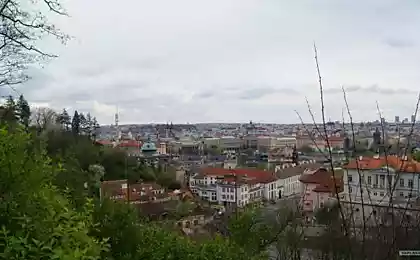213
Underground cities of the XXI century: modern technologies of underground construction

Introduction
In the modern world, underground construction is becoming an increasingly relevant solution for the development of urban infrastructure and the creation of protected facilities. The development of technologies allows to create large-scale underground structures that meet the highest requirements of safety and comfort.
Experts estimate that by 2030, more than 60% of the population of major cities will regularly use underground infrastructure. This is due not only to the shortage of terrestrial space, but also to the growing requirements for environmental friendliness and energy efficiency of urban facilities.

Technological advances
Modern methods of construction
- Shield penetration technology (TBM):
- Passage speed up to 50 meters per day
- Automated control system
- Minimum environmental impact
- The wall-in-the-ground method:
- Depth of structures up to 100 meters
- Use of special bentonite solutions
- High seismic stability
- Innovative materials:
- Self-healing concrete
- Composite materials of the new generation
- Smart systems for monitoring the condition of structures
Interesting fact: Modern tunneling complexes are equipped with artificial intelligence systems that can analyze the composition of the soil in real time and automatically adjust the parameters of the passage.
Security systems
- Autonomous power supply systems:
- Diesel generators of the latest generation
- Energy storage systems based on lithium-ion batteries
- Backup power supplies with automatic switching on
- Multilevel air filtration:
- Military class HEPA filters
- Chemical and biological treatment systems
- Autonomous air regeneration systems
- Life support systems:
- Closed water cycle
- Hydroponic systems for growing products
- Emergency medical modules
Known underground sites

Switzerland: Sonnenberg
The former civilian shelter in Lucerne, partially converted into a museum, is a unique example of the adaptation of military infrastructure for peaceful purposes. The facility includes:
- 7 floors of underground premises
- Autonomous power supply system
- Own water supply system with artesian wells
- Medical center for 1000 beds

United States: Cheyenne Complex
The military facility in Cheyenne Mountain is a model of advanced technologies for protection against all kinds of modern threats. Features of the complex:
- Depth of occurrence more than 600 meters
- System of suspended structures for protection against earthquakes
- Autonomy of work up to 30 days
- Protection against electromagnetic pulse

Norway: Svalbard Storage
The unique storage of seeds located in permafrost ensures the safety of the world gene pool of plants. Technical specifications:
- Temperature -18°C
- Capacity up to 4.5 million seed samples
- Natural cooling system
- Protection against permafrost melting
Civil application
Underground infrastructure of megacities
Modern cities are actively developing underground space for various purposes:
- Shopping complexes:
- Multilevel shopping malls
- Underground restaurants and entertainment centers
- Exhibition spaces
- Transport hubs:
- Underground stations
- Multilevel transfer complexes
- Automated cargo delivery systems

Notable: In Montreal, there is an underground city of RÉSO, which includes 32 km of tunnels connecting shopping centers, hotels, residential complexes and subway stations.
Environmental benefits
Underground construction provides a number of significant environmental benefits:
- Energy efficiency:
- Reduce heating costs by up to 50%
- Use of geothermal energy
- Natural thermal insulation
- Conservation of biodiversity:
- Minimum impact on the landscape
- Preservation of green spaces
- Reducing noise pollution
Development prospects
Innovative projects
- Underground farms:
- Vertical plant cultivation
- Automated care systems
- Year-round production
- Research centres:
- Laboratories for sensitive equipment
- Data centres
- Research facilities
Challenges and solutions
- Psychological comfort:
- Natural light imitation systems
- Creation of green spaces
- Spatial design
- Economic efficiency:
- New construction methods
- Optimization of operating costs
- Multifunctional use
Conclusion
Modern underground structures are complex engineering facilities created using advanced technologies. They serve various purposes, from security to urban infrastructure development. Their development continues, opening up new opportunities for humanity.
Underground construction is expected to increase significantly in the coming decades, especially in major cities. This is due both to the growing need for efficient use of urban space and to the development of technologies that make underground construction more affordable and safe.
Sources and literature
- International Association for Tunneling and Underground Space (ITA-AITES)
- Tunnelling and Underground Space Technology
- Technical documentation of existing facilities
- Scientific publications in the field of underground construction
- World Underground Construction Conference
- Urban Underground Space Technology Institute
- Proceedings of underground construction conferences
- Documentation of underground urban projects
Psychological state of modern society: shocking statistics and inconvenient truth
Revealed predictions of Nostradamus and Vanga for 2025, from these prophecies of frost on the skin























